#Yoshiwara
Text
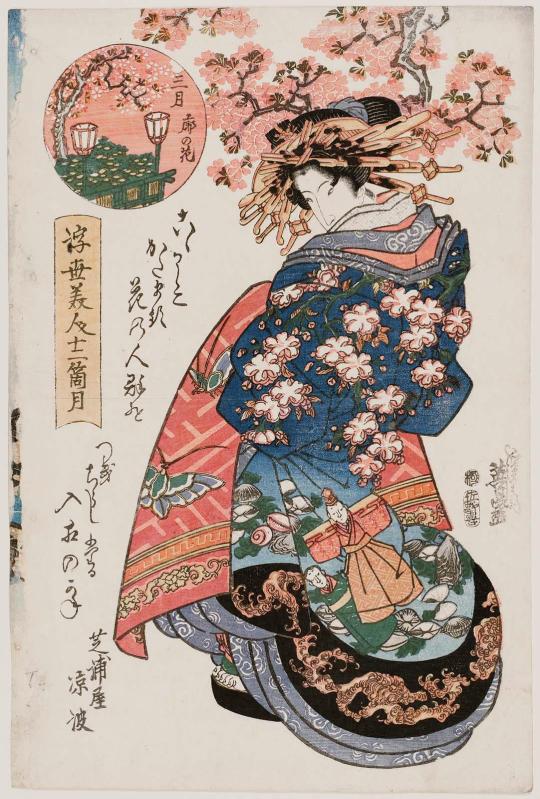
Third Month, Cherry Blossoms in the Yoshiwara (Edo period) by Keisai Eisen (Japanese, 1790–1848).
Woodblock print.
Image and text information courtesy MFA Boston.
285 notes
·
View notes
Text

Cherry blossoming in the Yoshiwara borough of Tokyo, Japan
Japanese vintage postcard
#tokyo#sepia#japanese#cherry#photography#vintage#postkaart#borough#ansichtskarte#ephemera#carte postale#postcard#japan#postal#briefkaart#photo#blossoming#tarjeta#historic#yoshiwara#postkarte
14 notes
·
View notes
Text


One Hundred Famous Views of Edo no. 38: Dawn at the Yoshiwara, Utagawa Hiroshige, 1857
8 notes
·
View notes
Text

Courtesans Viewing Cherry Blossoms
by Yoshitora (active circa 1840 - 1880)
8 notes
·
View notes
Text
Yoshiwara: Life of a Kamuro
Negotiations
Being sold to a brothel or Yūkaku (遊廓) was common in the Edo period. There was a belief that a true courtesan could only be one who had lived as such for her entire life. Finding dedicated recruits was difficult, so grooming them from an early age became the convenient solution. Scouts of brothels targeted towns hit by natural disasters or diseases, which were typically already poor and vulnerable.
The scouts told the parents that the girl would live in luxury, wear the finest silks, eat white rice, and work in their teahouse, selling sex. They were notoriously famous for lying about the conditions their daughter would live in. However, the parents agreed easily; they were already living in poverty, and having one less mouth to feed was a relief. Socially, it was also completely acceptable. It was a child's duty to help out their parents if need be. And lastly, they were paid. It sounded like a win-win solution: their daughter had an 'amazing' job opportunity, while they made some quick money in their already desperate situation. It was common belief that prostitution, shameful as it may be, is easier than doing back-breaking work on the family farm. However, of course, this could not be further from the truth.
When the girl was sold, they took her to Yoshiwara. There, she experienced the first sight of the gates, which she entered for the first and usually the last time in her life.
However, the contract wasn't so simple. They often employed girls specifically for their role as a kamuro, which enabled brothel-keepers to avoid paying large sums upfront for girls who didn't meet expectations early on. The expectation was that once the girl was ready to become a prostitute, her contract would be renewed for the standard 10-year term. Yet, during the contract negotiation, her parents or procurer might arrive armed with a more enticing offer from a different brothel. The brothel-keepers were powerless to stop them from taking her away and selling her to another brothel, along with all the care and investment that had gone into her training.
Most kamuro stayed at the brothel they were originally sold to.
Arrival
The first day in her brothel she was bathed, fed and ultimately transformed into the appearance of a Kamuro (禿). They were paired with a higher-ranking courtesan, whom they were supposed to call 'Elder Sister'.
However, these sister relationships differ significantly from those among geisha. The relationship between a maiko and her older sister is mainly ceremonial. The geisha introduces her younger sister to society, teaches her proper etiquette, and helps her establish herself socially. However, the maiko's okiya covers the expenses of her training and debut, providing housing, food, kimono, and hair ornaments.
In contrast, a courtesan is personally responsible for feeding, clothing, and housing her kamuro. If the courtesan didn't work, the kamuro would starve. In return, the kamuro spends much of her time directly serving her older sister, either as an errand girl or as a splendidly dressed status symbol. Additionally, if the kamuro debuted as a courtesan, her older sister would bear the staggering costs herself.
The new Kamuro was given a name. Kamuros had simple names, unlike the flowery names often given to courtesans. Their names were usually written in katakana, a script considered less formal and more childlike compared to the sophisticated kanji. They were often paired together, like Iroha (Color) and Nioi (Scent), or Chidori (Sandpiper) and Namiji (Trail of Waves).

(An Oiran accompanied by two Kamuro; Torii Kiyonaga)
The job of a Kamuro
As girls aged five to nine, they paraded in the entourage of their 'elder sisters' courtesans when they appeared in public. Kamuros also ran errands for them and attended to them when they met with clients. They dashed around the streets of Yoshiwara, carrying mail for their elder sisters, delivering orders to merchants, presenting gifts, engaging in banter with locals, and purchasing snacks for their elder sisters' enjoyment. They were as integral to the life of Yoshiwara as their courtesan counterparts, often laughing at the uncouth manners of samurai visitors and composing haiku about life in Yoshiwara.
Kamuros were expected to collectively clean the brothel as well, performing chores such as wiping down all the woodwork, cleaning the floors, and sweeping the doorstep of the brothel.
Rewards for their work included receiving candy or sweet rice cakes. However, punishment was also common and varied from mild to severe. Mild punishment included physical abuse, while severe punishment could entail burns, restraint, or even being hung by the abdomen from a tree.
Tricks of The Trade
Kamuros weren't prostitutes and weren't allowed to engage in it. However, they weren't clueless. Exposed to it from a young age, they knew what brought food to the table. Their 'elder sister' courtesan would teach them manipulation tactics, what valuable information is and what isn't, essentially how to make it in Yoshiwara.
Clients prowled around the Kamuro, asking how to win the courtesan's heart. They believed they'd be truthful, as children. However, they retained all the information, whether good or bad, for their elder sister. They were the eyes and ears of the high-ranking courtesans, running around town spying on people, listening to rumors, and catching cheating clients (as it was a rule of Yoshiwara that a client could only see one courtesan at a time). This however was the mildest form of their manipulation tactics.
Let's say, for example, a patron who wanted to keep his name secret. A kamuro would run up behind him and tug on his sleeve, calling him the wrong name. Clueless patrons would correct the girl, inadvertently leaking their own real names. This could also be done if her elder sister is having a slow week with no clients. The kamuro would beg a previous client, claiming her sister was lonely and how her courtesan sister speaks of him so fondly, missing him, enticing him to revisit her elder sister.

(Kamuro Accosting a Young Man; Ishikawa Toyonobu)
12 notes
·
View notes
Text
The Heroes of Yoshiwara
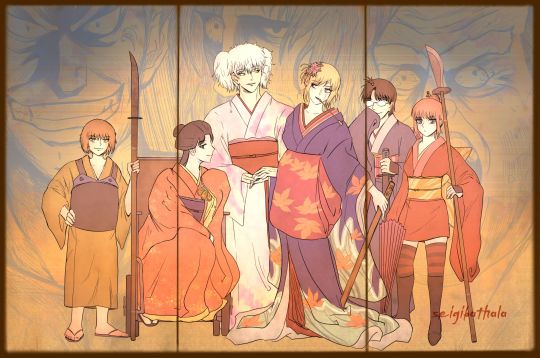
Background

A fanart dedicated to the heroes of these amazing Gintama Arcs
Yoshiwara's 1st Born (Seita) and the Sun (Hinowa)
Gintoki’s kids: Shinpachi Shimura and Kagura - When it comes to the title of 'Savior of Yoshiwara', it is not just Gintoki of course but also his kids.
And of course, our former Shiroyasha and the Shinigami Dayuu.
#gintama#yorozuya#sakata gintoki#tsukuyo#peach bursts#shinpachi shimura#kagura#jiraiya#sada sada#yoshiwara#Yoshiwara in Flames Arc#red spider arc#hinowa#shiroyasha#seita#paako#courtesan of a nation arc#basically gintama yoshiwara arcs in one art#illustration#hosen#digital art#ukiyoe#Shinigami Dayuu
94 notes
·
View notes
Conversation
Tsukuyo: [walks into the room]
Hinowa: She's covered in blood again.
Hinowa: Why is she always covered in blood?
#tsukuyo#hinowa#yoshiwara#gintama#incorrect quotes#incorrect gintama quotes#incorrect gintama#gintama meme#gintama memes#gintama quotes#gintama quote#incorrect gintama quote
38 notes
·
View notes
Photo

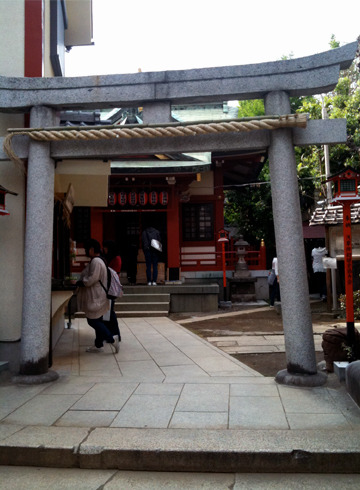

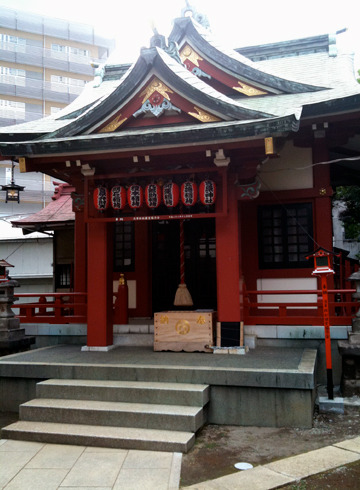
吉原神社(東京都台東区)
https://www.sa-ka-ki.com/jinja/tokyo/yoshiwara/
#吉原神社#神社#神道#東京#日本#吉原#浅草#狛犬#鳥居#yoshiwara shrine#shrine#jinja#shinto#tokyo#japan#yoshiwara#asakusa#komainu#torii
24 notes
·
View notes
Text
Random rambling
I know what most people think about RLD arc (that it was uneventful, almost plotless, being Tengen not SO STRONG) BUT can we focus on the Kamaboko Squad for a moment? The four of them literally KILLED the Arc. Nezuko with her strenght and full demon form, Inosuke and Zenitsu with their determination, technique and durability throughout the battle. Don’t even get me started on feral Tanjiro and the first time we saw a slayer getting THE MARK. The way the trio joined forces and cooperate to attack Daki and Gyutaro at the same time was SO DAMN FLASHY! I’m so proud of what they did back there
#demon slayer#kny#kny s2#red light district#entertainment district arc#upper moon six#daki#gyuutaro#yoshiwara#Kimetsu no Yaiba#tengen uzui#tanjiro kamado#nezuko kamado#inosuke hashibira#zenitsu agatsuma
14 notes
·
View notes
Text
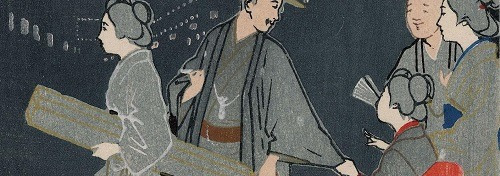
Hay un largo paseo hasta la entrada delantera del arrabal, donde las decaídas ramas de los sauces despiden a los juerguistas y las luces del burdel guiñan en el foso, negro como la laca que tiñe las sonrisas de las bellezas de Yoshiwara. Desde los cuartos del segundo piso de las altivas casas se derrama a los callejones la música y el jolgorio, casi tangibles. ¿Cómo prosperan tales negocios? El caso es que los calesines no paran de llegar día y noche.
Al vecindario detrás del arrabal lo llaman compás del templo Daion. Por muy pío que suene, sus vecinos le dirán que es un lugar muy descocado. Doblando la esquina del santuario de Mishima no se ven residencias señoriales, solo cuadras de diez o veinte casas con aleros vencidos hace mucho y postigos desvencijados que cierran a medias. Aquí no medra el comercio.
Ante las maltrechas casas todos se afanan recortando curiosas piezas de cartón, pintorreándolas de colores y espetándolas en unos extraños palitroques. Familias enteras por todo el barrio están entregadas a la confección de estas raras y abigarradas banderillas. Ponen a secar los recortes por la mañana y a la noche los montan. ¿Qué son estos cacharros en los que todos andan atareados? «¿No lo sabe usted? —exclamaría un comerciante atónito— ¡Rastrillos de la buena suerte! ¡Tendría que ver cómo se los llevan los señorones en el festival de Otori!»
Cada año sin falta, nada más bajar el ramo de pino de Año Nuevo del portal, todos los comerciantes que se precien se dedican al mismo negocio, y para el verano manos y pies están todos manchados de pintura. Cuentan con la ganancia para comprar ropa nueva para las fiestas. Si los dioses conceden la fortuna a los que compren estos amuletos, los que los confeccionan se imaginan que serán ellos quienes recojan el maná. Lo curioso es que por aquí nadie sabe de ningún vecino que se haya hecho rico.
Casi todos acá, de hecho, tienen algo que ver con el arrabal. Los hombres hacen chapuzas para las casas de menos categoría. Oigan a éste jugueteando con un manojo de tarjas de guardarropa antes de salir a la tarea, poniéndose el tabardo cuando los demás se lo quitan. Su mujer choca pedernales en la puerta para guardarlo de la mala fortuna. ¡Quién sabe si volverá mañana! Es un oficio peligroso. Inocentes circunstantes mueren en las reyertas de los burdeles. ¡Y cuídate mucho de frustrar el doble suicidio de una cortesana y su amante! Pero allá van los maridos cada noche a jugarse la vida, como si fueran colegiales que salen de merienda.
Las hijas de la casa también tienen quehacer con el barrio: aquí una es camarera en una de las grandes casas; allá, otra una trotona, trajinando como lanzadera entre el burdel y la casa de té. Van patullando linterna en ristre, anunciando a todos el nombre del establecimiento. Ahora su trabajo les parece de mucho rumbo y gala, como si actuaran sobre un noble tablado. Pero, a punto ya de acabar su aprendizaje, ¿qué les espera a todas estas chicas? Allá va una, cumplidos los treinta, muy peripuesta con su capa de algodón, vestido a juego y sus prudentes medias azul oscuro. No hace falta decir qué lleva en el atadillo bajo el brazo. Plon, plon, plon, hacen los tacones de sus zuecos —no tiene un minuto que perder— y la frágil pasarela se descuelga sobre el canal. «Aquí se lo dejo —dice poniendo en el suelo su fardo—, hay que dar una vuelta enorme hasta el frente.» Así que es costurera, al parecer.
Las costumbres aquí son muy particulares. No se encuentran muchas mujeres que se aten la faja pulcramente detrás. Una cosa es una mujer de cierta edad que se pirra por los estampados chabacanos o las fajas demasiado anchas, otra muy distinta ver a todas estas descaradas niñas de quince vistiendo las prendas más llamativas, chupando alquequenjes para evitar la preñez. Pero este barrio es así. Una furcia que ayer atendía bajo el nombre de no sé qué heroína del Romance de Genji en una casa de tercera junto al canal, se ha escapado con un hampón. Abren un figón, cuando ninguno tiene la menor idea de cómo llevar un negocio. Pronto se arruinan. La bella empieza a añorar su antiguo oficio. Sus activos fueron a la basura con los huesos del pollo servido anoche, pero la ninfa sí puede volver al nido. La gente por aquí encuentra atractivo el tipo, quién sabe por qué.
¿Cómo no va a influir tal atmósfera en los niños? Las mojigangas de otoño, por ejemplo. La madre de Mencio habría puesto el grito en el cielo si hubiera visto lo pronto que aprenden a imitar a los mimos famosos. ¡Vamos, que no hay uno que no sepa remedar a Rohachi o a Eiki! Oyen cómo los alaban y esa misma noche los despabilados golfillos andan tras sus pasos haciendo la ronda de las casas. Así empiezan con siete u ocho, ¡y para cuando tienen quince…! Miren a éste, que vuelve a la tarde de los baños con la toalla al hombro, graznando groseramente con la boca torcida la última coplilla. En la escuela la clase de música desemboca al primer descuido en las cadencias del barrio. Las tonadas de las geishas animan los encuentros deportivos, ¡sobran los hurras de la escuela! No se puede más que simpatizar con sus profesores de la Ikueisha aquí cerca. Será una escuelilla abarrotada —de hecho es particular—, pero hay hasta un millar de estudiantes y los profesores que triunfan aquí pronto son famosos. Aquí decir escuela es decir la Ikueisha.
Escúchenlos a la salida de clase: «Tu padre no pasa una en la casa de té junto al puente ¿no?», le gritan al hijo del bombero. La sabiduría de la calle; los niños están al tanto de lo que se cuece en el arrabal. Trepan por las cercas de los jardines, imitando a los bomberos: «¡Oye, que has quebrao los pinchos pa que no entren los ladrones!». El hijo de un tinterillo de poca monta inicia el hostigamiento: «Tu viejo es un mulo del burdel ése, ¿no? ¡Di!». El acusado se pone como un tomate. El pobrecillo moriría antes que reconocer que su padre cobra las facturas de cierto burdel. Y luego están los consentidos hijos de los peces gordos del arrabal, que crecen apartados del lugar, para poder pasar por bien nacidos. Lucen gorra de secundaria a la última con aire desenfadado y llevan la indumentaria europea con mucho caché. Divierte ver a los otros hacerles la pelota: «¡Señorito! ¡señorito!», llaman, cuando mejor dirían niñato malcriado.
Entre los muchos escolares de la Ikueisha está Nobuyuki del templo Ryūge. A su debido tiempo la tonsura segará su apretado pelo negro y endosará el hábito de sacerdote. Bien podría haberlo decidido él, pero también puede ser que se haya resignado a su suerte. Su padre era clérigo y, siguiendo sus pasos, Nobu es ya un erudito. Chico callado por naturaleza, sus compañeros lo consideran un muermo y se meten con él. «Mira, esto es lo tuyo: ¡un parroquiano! —gritan izando un gato muerto en un palo— ¡Adminístrale los últimos sacramentos!» Pero todo eso pasó, ya nadie se burla de él, ni por error. Tiene quince años, estatura media y el oscuro cabello cortado a cepillo al modo escolar; con todo tiene un aire que lo distingue de los demás. Aunque todavía lleva el ordinario nombre de Fujimoto Nobuyuki, ya hay algo en su porte que hace barruntar al eclesiástico.
Higuchi Ichiyō
#Higuchi Ichiyō#literatura japonesa#Yoshiwara#takekurabe#barrio#infancia#costumbrismo#traducción©ochoislas
3 notes
·
View notes
Text
Orchid of Edo update.
Muraji continues to be the worst.
4 notes
·
View notes
Text

https://www.fogaminghub.com/post/capturing-the-flames-your-guide-to-the-house-fire-mission-in-rise-of-the-ronin
🔥 Ready for a thrilling escapade in Rise of the Ronin? Join the House Fire Mission and assist Yoshihide the Painter in capturing the beauty of flames! 🌠
Follow these steps:
1. Find the location.
2. Snap a stunning photograph. 📸
3. Defeat any enemies in your way! ⚔️
Don't miss out on the adventure—read the full guide!
#Rise of the Ronin#Adventure Games#RPG#Historical Context#Japanese Culture#Quest Walkthrough#Story-driven#Character Development#Game Features#Exploration#Action-adventure#Immersive Experience#Dynamic Gameplay#Gaming Community#Unique Abilities#Photographic Mission#Combat Strategy#Cultural Exploration#Emotional Narrative#Narrative Landscapes#Gameplay Tips#Action-packed#Indie Games#Fun Challenges#Yoshiwara#Edo Period#Photography#Game Mechanics#3D Environments#Narrative Experience
1 note
·
View note
Text

Festival in the Yoshiwara, 1879
by Chikanobu (1838 - 1912)
6 notes
·
View notes
Text
2024 Shichifukujin Meguri: Spiritual Gems in Asakusa
2024 Shichifukujin Meguri: Spiritual Gems in Asakusa
Nestled in Tokyo’s historic Asakusa district, the Shichifukujin Meguri invites you on a spiritual journey like no other. Explore seven revered temples and shrines dedicated to the Seven Lucky Gods, known as Shichifukujin. Embark on this sacred odyssey to immerse yourself in the rich tapestry of Japanese spirituality, history, and culture.
The whole journey took us about two hours and a half – and…

View On WordPress
1 note
·
View note

